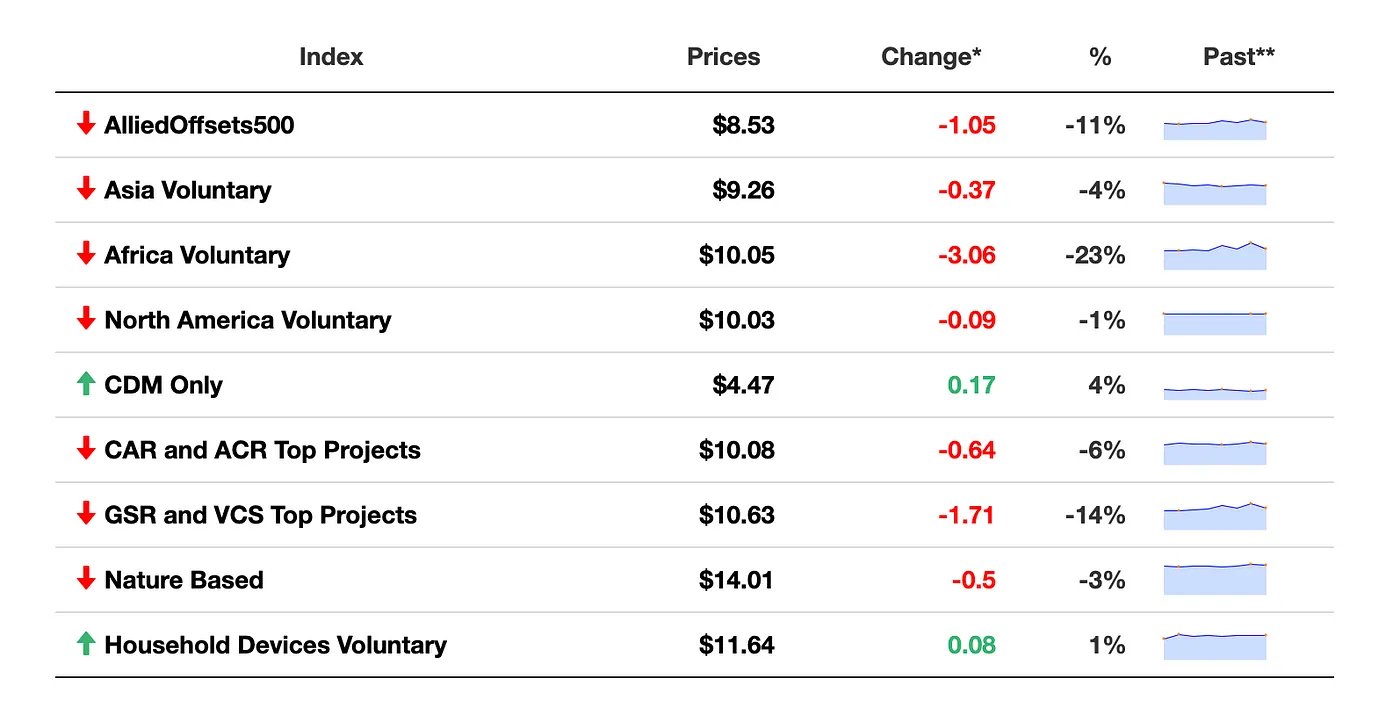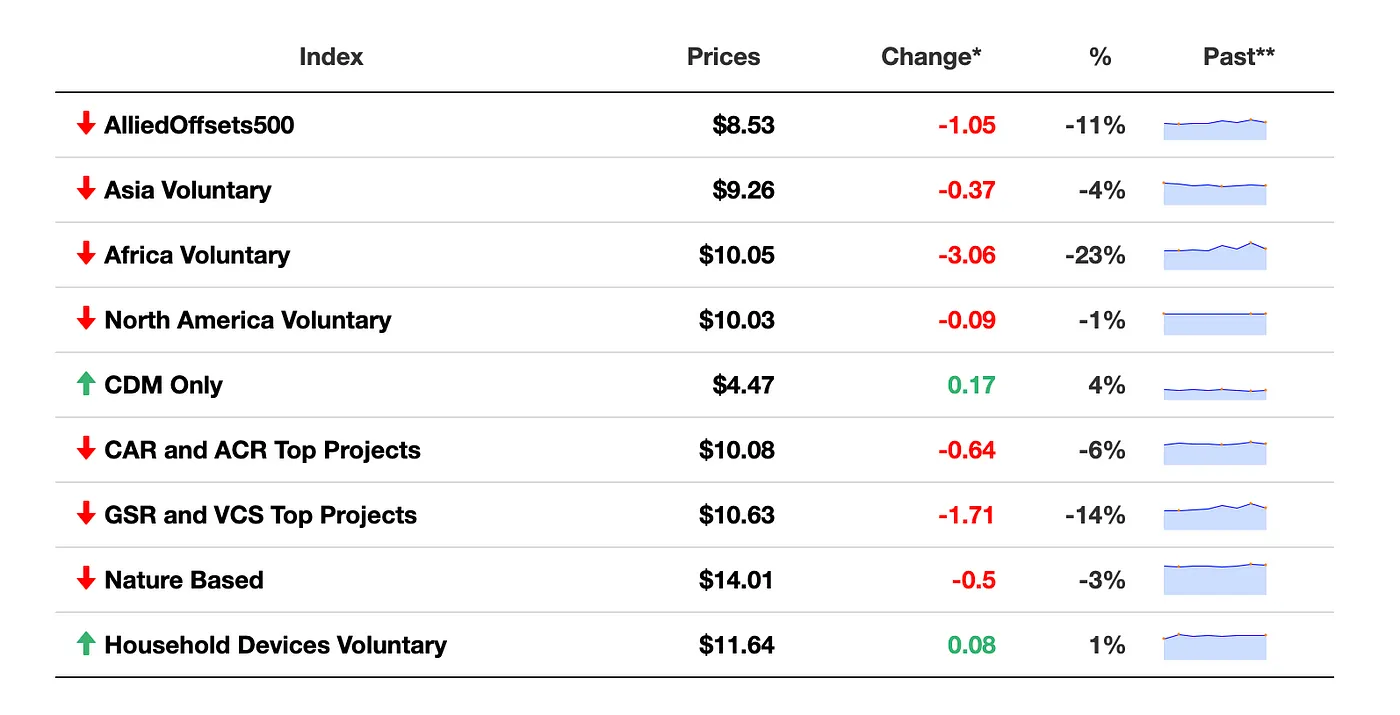
Promoting price transparency for voluntary carbon credits.
When we started looking into the voluntary carbon market nearly two years ago, two key issues dominated the market: what is the quality of the credits, and what is the price? Having no experience in environmental sciences, we quickly decided to let the experts pursue the former question (stay tuned for announcements on that front). That gave us a clear mandate: understanding the price of carbon credits.
We’ve come a long way toward providing this transparency: from valuing the price of 19,000 projects globally and pulling in retail pricing data, to forging partnerships with Emsurge and AirCarbon Exchange, we’ve helped to bring transparency in pricing for voluntary carbon offsets.
Our latest initiative is a natural progression to our work to date — we’re excited to announce the AlliedOffsets Carbon Indices. Our indices are unique in that they take into account not only the price of the underlying projects’ credits, but also the volumes of credits retired.

As an example, consider our flagship AlliedOffsets500 (AO500) index. This reflects the price of the top 500 projects that have been retired since January 1st, 2020, weighted by the number of credits each one has retired. In creating this index, we wanted to answer the question, ‘How much does a carbon credit cost?’ While there is a wide range of technologies and prices, AO500 narrows down the question to what’s actually being retired. In other words, instead of capturing prices that reflect the wide spread of what a ton of CO2e is worth — from this $3 CDM project to this €500 biochar project — we wanted to provide a single price that reflects the average price of carbon in the market, according to what’s actually being retired.
We’ve launched with nine custom indices, all of which capture different parts of the market. The benefit of our approach, however, is that we are able to create custom indices based on market needs. The indices can be organized by:
- SDG and CCB data
- geography
- methodology
- sector
- project proponent
- project verifier
- registry
- project size
- and much more
If you’re curious to learn more, get in touch! In the meantime, you can get updates of our indices via Carbon Pulse’s weekly VCM Report (subscription required), or on our site (with backward-looking data).
